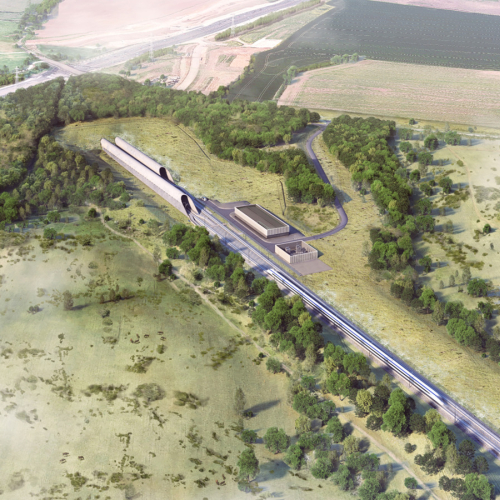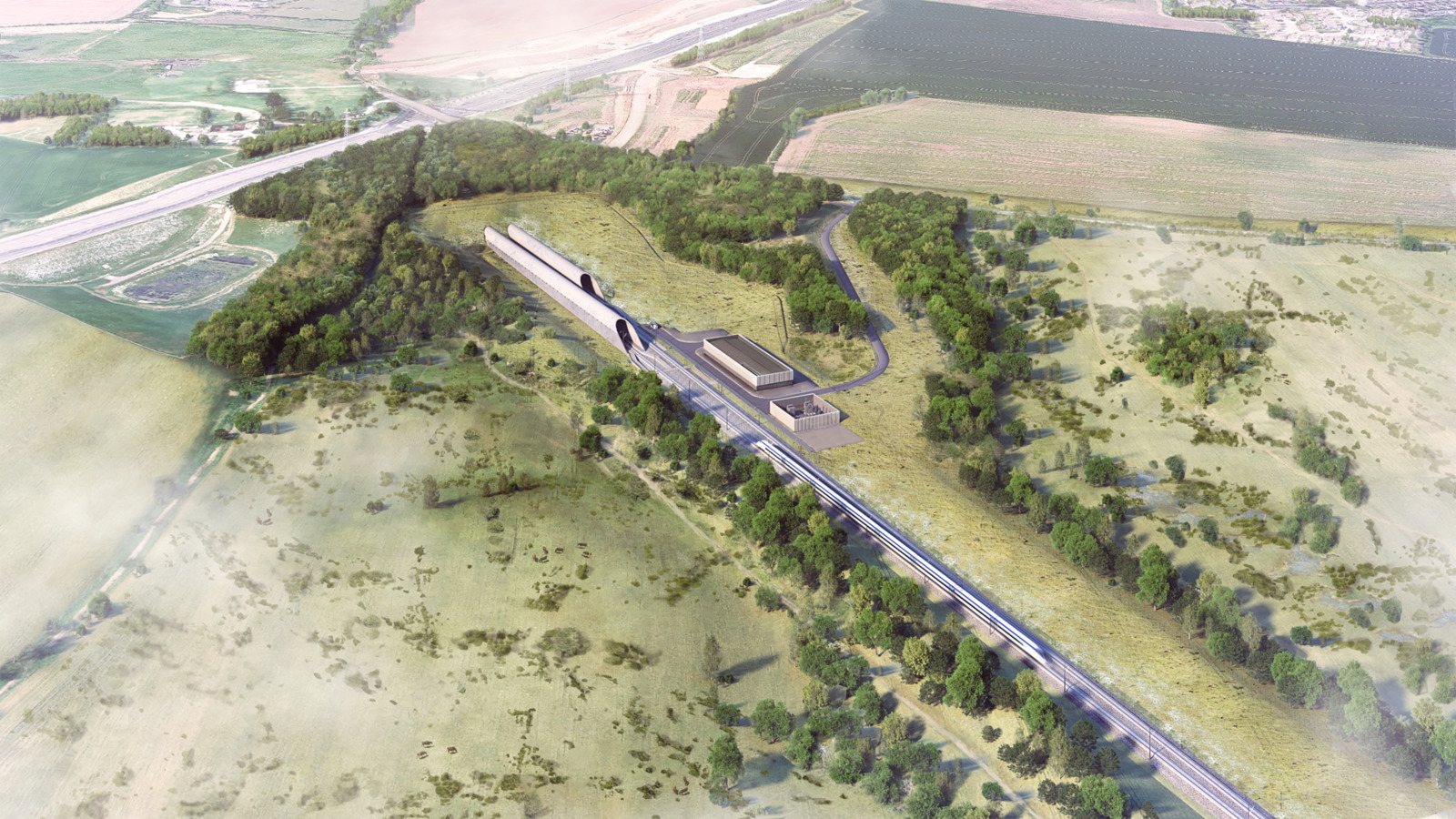HS2 reveals ambitious plans to create one of the largest areas of chalk grassland in the Colne Valley.
An ambitious scheme, designed by HS2’s landscape architects, ecologists, engineers and soil specialists, aims to reuse construction materials to create 127 hectares of new chalk grassland, woodland, wood pasture and wetland habitats that will substantially enhance the local natural environment.


The Colne Valley Western Slopes project will be a major contributor in meeting HS2’s carbon reduction targets by delivering significant ecological gain in the Colne Valley. It will also reduce the carbon footprint of the project by reducing road haulage and waste treatment activities and will enable habitats to sequester carbon by replacing arable land with natural habitats.
Plant species and habitats are being carefully selected to be resilient to a changing climate. Almost 65,000 trees and shrubs of 32 species will be planted together with nearly 3.5km of new hedgerows. Around 90 hectares of calcareous grasslands which once thrived on the valley slopes will be established and areas of historic woodland reinstated.
The project, being designed and delivered by HS2’s civils contractor Align, which is made up of VolkerFitzpatrick, Bouygues Travoux Publics and Sir Robert McAlpine, will provide wider health and recreation benefits for neighbouring communities including the provision of new connected green spaces and around 4.5km of new footpath, cycling and horse-riding routes.
Arable land that is initially needed for a major works compound to construct the Colne Valley Viaduct and Chilterns Tunnel will be transformed through the re-use of existing soils and recycling of three million m3 of chalk taken from the tunnel excavation, as well as concrete and limestone aggregate materials used in the construction process.
Reusing materials rather than transporting them away by road will significantly reduce carbon output. The excavated material will be used to re-establish the locally distinctive chalk valley landscape, replicate natural drainage flows and establish the right growing conditions for calcareous grassland across the site.
Calcareous grasslands, which develop on shallow soils overlying chalk or limestone, are a valuable, scarce and rapidly declining habitat in the UK, with this decline reflected in both the Colne Valley and adjacent Chiltern Hills. The neighbouring Chilterns Area of Outstanding Natural Beauty is currently thought to support around 700 hectares of chalk grassland. This collaborative project will provide a unique opportunity to create one of the largest extents of such habitat in this area.
New planting and seeding will create an extensive mosaic of habitat that will potentially be colonised by hundreds of species of flora and fauna, including invertebrates, birds, mammals, reptiles and amphibians
HS2’s environment director Peter Miller said: “This project forms a major part of HS2’s Green Corridor programme to establish better connected, sustainable and biodiverse landscapes along the route of the new railway that will contribute substantially to HS2’s carbon reduction target. It demonstrates HS2’s approach to addressing many of the complex issues surrounding climate change and which are central to protecting our environment, and is a great example of how good design and planning can mitigate the effects of climate change.”
Daniel Altier, project director from Align said: "This innovative, multi-discipline project is designed to create a huge expanse of new grassland, connected woodland and wood pasture in the Colne Valley, helping to preserve declining or rare flora and fauna in the area, and providing a lasting legacy for biodiversity and local people. We are pleased to be collaborating on the design with Natural England, Hertfordshire and Middlesex Wildlife Trust, the Colne Valley Regional Park Panel, local authorities, and specialist soils experts.”
Align is currently preparing the site for the launch of the two tunnel boring machines that will excavate the 16km-long Chiltern Tunnels. Once launched in 2021, the site will receive a continuous supply of chalk until tunnel completion in 2024. Field trials are in preparation ahead of final seeding, and planting of trees and shrubs in 2025. At peak, around 1,200 people are expected to be employed in the design and construction of the Chiltern tunnels and the viaduct, with 50 opportunities for apprentices